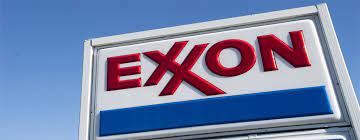Oil & Energy
‘Exxon’s Falling Production, Highly Bullish For Oil Prices’

Last week, ExxonMobil (NYSE:XOM) reported Q 2 2021 earnings in one of big oil’s most anticipated scorecards this earnings season. The United States’ largest oil and gas company posted stellar earnings that proved that the worst for the U.S. shale industry might finally be in the rear view mirror. Exxon’s Q2 earnings swung to a $4.7billion profit from a loss $1.1billion in the year-earlier quarter while revenues more than doubled to $67.7billion (+107.7 percent Y/Y), with both metrics exceeding Wall Street’s expectations.
Exxon said that its impressive earnings were driven by strong oil and natural gas demand as well as the best-ever quarterly chemical and lubricants contributions.
The company was able to achieve those results despite declining production: Q2 overall production slipped 2% Y/Y to 3.6million boe/day, despite production volumes in the Permian Basin jumping 34% Y/Y to 400K boe/day.
Exxon’s Q2 production clip marks the lowest level since the 1999 merger that created the oil and gas giant that we know today.
Meanwhile, H1 Capex clocked in at $6.9 billion, with full-year spending expected to come in at the lower end of its $16billion-$19billion guidance range.
Exxon says cash flow from operating activities of $9.7 billion was the highest in nearly three years and sufficient to cover capital investments, dividends, and pay down debt.
But persnickety shareholders appear unimpressed and have been bidding down XOM shares after the company failed to announce any share buyback program.
Whereas Chevron (NYSE:CVX), Shell (NYSE:RDS.A),and TotalEnergies (NYSE:TTE) all have announced a return to stock buybacks during the current earnings season, Exxon has opted to pay down debt rather than reward shareholders. Exxon suspended buybacks in 2016 as it went on one of the most aggressive shale expansions, particularly in the Permian.
WSJ Heard On The Street’s Jinjoo Lee says Exxon has less flexibility than its peers, thanks to years of overspending followed by a brutal 2020. This has left the company in a vulnerable position, and now Exxon has little choice but to lower its debt levels which have recently hit record highs.
CEO Darren Woods, has reassured investors that reinstating buybacks is “on the table,” though he has reiterated that “restoring the strength of our balance sheet, returning debt to levels consistent with a strong double-A rating” remains a top priority.
But overall, Exxon’s declining production is the way to go in this environment.
Energy finance analyst at IEEFA, Clark Williams-Derry,a non-profit organisation and Kathy Hipple, has told CNBC that there’s a “tremendous degree” of investor skepticism regarding the business models of oil and gas firms, thanks to the deepening climate crisis and the urgent need to pivot away from fossil fuels. Indeed, Williams-Derry says the market kind of likes it when oil companies shrink and aren’t going all out into new production but instead use the extra cash generated from improved commodity prices to pay down debt and reward investors.
Investors have been watching Exxon closely after the company lost three board seats to Engine No. 1, an activist hedge, in a stunning proxy campaign a few months ago. Engine No. 1 told the Financial Times that Exxon will need to cut fossil fuel production for the company to position itself for long-term success. “What we’re saying is, plan for a world where maybe the world doesn’t need your barrels,” Engine No.1 leader Charlie Penner told FT.
Better still, Exxon has been quickly ramping up production in the Permian, where it’s targeting a production clip of 1 million barrels per day at costs of as low as $15 per barrel, a level only seen in the giant oil fields of the Middle East. Exxon reported that production volumes in the Permian Basin jumped 34% Y/Y to 400K boe/day, and could hit its 1 million b/d target in less than five years.
After years of under performance amid weak earnings, the U.S. shale sector remains on track for one of its best years ever.
According to Rystad Energy, the U.S. shale industry is on course to set a significant milestone in 2021, with U.S. shale producers on track for a record-high hydrocarbon revenue of $195 billion before factoring in hedges in 2021 if WTI futures continue their strong run and average at $60 per barrel this year and natural gas and NGL prices remain steady. The previous record for pre-hedge revenues was $191 billion set in 2019.
Rystad Energy says that cash flows are likely to remain healthy due to another critical line item failing to keep up: Capital expenditure.
Shale drillers have a history of matching their capital spending to the strength of oil and gas prices. However, Big Oil is ditching the old playbook this time around.
Rystad says that whereas hydrocarbon sales, cash from operations, and EBITDA for tight oil producers are all likely to test new record highs if WTI averages at least $60 per barrel this year, capital expenditure will only see muted growth as many producers remain committed to maintaining operational discipline.
For years, ExxonMobil has been one of the most aggressive shale drillers with massive spending and capex. Luckily, the company is no longer too keen on maintaining that tag, which is bullish for the U.S. shale sector.
There are already growing fears that a full return of U.S. shale due to improved commodity prices could muddy the waters for everyone
According to an analysis by the authoritative Oxford Institute for Energy Studies, rising oil prices could allow for a significant return of US shale to the market in 2022, potentially upsetting the delicate re-balancing of the global oil market.
“As we enter 2022, the US shale response becomes a major source of uncertainty amid an uneven recovery across shale plays and players alike. As in previous cycles, US shale will remain a key factor shaping market outcomes,” Institute Director Bassam Fattouh and analyst Andre as Economist have said.
Obviously, many investors would prefer that this happens later rather than sooner and so far, indications are that this is the most likely trajectory.
By: Alex Kimani
Kimani writes for Oilprice.com
Oil & Energy
Hedge Funds Turn Bearish On Oil, Bullish On Natural Gas

Traders have not been this bearish on oil in months or so bullish on United States natural gas in years.
The latest data on money managers’ positioning in the WTI and Brent crude and U.S. natural gas futures showed two contrasting trends—speculators are betting that oil prices would remain low or go even lower while increasing the bets that natural gas prices would continue marching higher.
So far this year, geopolitical and supply and demand factors have been increasingly bearish for the oil price outlook and increasingly bullish for natural gas prices.
In the oil market, hedge funds and other portfolio managers have been slashing their bullish bets since the end of January, when the U.S. sanctions on Russia’s oil trade were the primary bullish driver of managed money to bet on a tightening market.
With U.S. President, Donald Trump, now in office, the sentiment has quickly soured amid the president’s insistence on lower oil prices, his efforts to broker an end to the war in Ukraine, and – most of all – the enormous uncertainty about on-and-off tariffs and tariff threats and their potential impact on the American economy.
As a result, market participants are preparing for lower oil prices, even amid expectations of declining oil supply from Iran and Venezuela due to President Trump’s hawkish policy toward these OPEC producers.
Speaking of OPEC, the wider OPEC+ group has just said it would begin increasing supply as of April, adding further downward pressure on prices.
Faced with all these bearish drivers, money managers have been reducing their bullish bets on crude oil futures, with the U.S. WTI Crude hitting the lowest net long position – the difference between bullish and bearish bets – in 15 years at the end of February.
In the week to March 4, the latest reporting week with data released on March 7, speculators bought WTI amid a major selloff in all other commodities except for U.S. natural gas.
The net long in WTI rebounded from the 15-year low, but it wasn’t because the market suddenly started betting on higher prices going forward. The rise in WTI buying and the net long was the result of short covering in the U.S. crude futures contract.
In Brent, hedge funds cut their bullish-only bets in the week to March 4 for the biggest decline in longs since July 2024.
Unlike in crude oil, money managers have become increasingly bullish on U.S. natural gas after inventories dipped this winter to below the five-year average as demand surged in the coldest winter for six years.
The net long in natural gas further swelled in the week to March 4, as the number of new bullish bets was four times higher than the new short positions.
“Natural gas continues to benefit from rising demand, both domestically in the US and towards exports via LNG,” Ole Hansen, Head of Commodity Strategy at Saxo Bank, said, commenting on the latest Commitment of Traders report.
At the start of the winter heating season in November, U.S. natural gas inventories were higher than average for the time of the year as America entered the season with stocks at their highest level since 2016.
These stocks, however, were quickly depleted during the coldest winter for six years, with demand for space heating and power generation soaring. A month before the end of the winter heating season, U.S. natural gas inventories have now slumped to below the five-year average and well below the levels from the same time in 2024, at the end of a mild winter.
The lower inventories and the higher demand – both for domestic consumption and LNG exports – have pushed prices higher, encouraging producers to boost gas output this year. Traders bet that prices will go even higher as demand from LNG plants is set to accelerate with the ramp-up of new U.S. export plants.
Paraskova writes for Oilprice.com.
By: Tsvetana Paraskova
Oil & Energy
Renaissance Finalises Acquisition Of SPDC

Renaissance Africa Energy Holdings says it has successfully completed the acquisition of 100 percent equity holding in the Shell Petroleum Development Company of Nigeria (SPDC).
Spokesperson of the company, Tony Okonedo, who disclosed this in a Press Release, Last Thursday, said Renaissance has completed all processes for the full transfer of ownership of SPDC to the consortium, adding that it will now operate as Renaissance Africa Energy Company Limited.
“Renaissance Africa Energy Holdings today announced that it has successfully completed the landmark transaction between itself and Shell for the acquisition of the entire (100%) equity holding in the Shell Petroleum Development Company of Nigeria (SPDC).
“This follows the signing of a sale and purchase agreement with Shell in January 2024 and obtaining all regulatory approvals required for the transaction. Going forward, SPDC will be renamed as ‘Renaissance Africa Energy Company Limited.
“Going forward, SPDC will be renamed as ‘Renaissance Africa Energy Company Limited’.
“Renaissance Africa Energy Holdings is a consortium consisting of four successful Nigerian independent oil and gas companies: ND Western Limited, Aradel Holdings Plc. FIRST Exploration and Petroleum Development Company Limited and the Waltersmith Group, each with considerable operations experience in the Niger Delta, and Petrolin, an international energy company with global trading experience and a pan African outlook”, the statement reads.
Speaking on the acquisition, the Managing Director/CEO, Renaissance Africa Energy Holding,Tony Attah, said Renaissance Africa Energy Company Limited has a vision to be the leading oil and gas producer in Africa and to help the continent achieve energy security.
Attah expressed gratitude to the Federal Government for its support and pledged the company’s commitment to the Petroleum Industry Act.
“We are extremely proud to have completed this strategic acquisition. The Renaissance vision is to be ‘Africa’s leading oil and gas company, enabling energy security and industrialization in a sustainable manner’.
“We and our shareholder companies are therefore pleased that the Federal Government has given the green light for this milestone acquisition in line with the provisions of the Petroleum Industry Act”, he said.
The CEO acknowledged the contributions of Nigeria’s Minister of Petroleum Resources, the Nigeria Upstream Petroleum Regulatory Commission (NUPRC), and the Nigerian National Petroleum Company Limited (NNPCL) in facilitating the deal.
He said, “we extend our appreciation to the Honourable Minister of Petroleum Resources, the CEO of the Nigeria Upstream Petroleum Regulatory Commission (NUPRC), and the CEO of Nigeria National Petroleum Company Limited (NNPCL) for their foresight and belief, paving the way for the rapid development of Nigeria’s vast oil and gas resources as strategic accelerator for the country’s industrial development”.
The Statement further revealed that Renaissance partner companies collectively have an asset base of more than $3 billion and currently safely produce approximately 100,000 barrels of oil per day (bpd) from 12 oil mining leases and operate two functioning modular refineries in Nigeria’s Niger Delta.
Oil & Energy
Oil-Rich Communities Must End Infighting To Access Dev Funds – FG

The Federal Government has cautioned oil-rich communities against infighting and disruption of oil production, saying it could hinder their access to the Host Community Development Fund.
Minister of State for Petroleum (Oil), Heineken Lokpobiri, made the appeal while speaking at the KEFFESO Stakeholders Forum, in Yenagoa, Bayelsa State.
Lokpobiri noted that the Petroleum Industry Act (PIA) was enacted to bring stability to the oil sector and address longstanding grievances about underdevelopment in host communities.
He lamented, however, that internal disputes among stakeholders have made it difficult for these communities to access and utilize the funds meant for their development.
Lokpobiri insisted that host communities must overcome internal conflicts that hinder their access to the funds.
“This KEFFESO Stakeholders Forum is to see how host communities can maximize the benefits from the Host Communities Trust Funds as prescribed by the PIA.
“If oil production is disrupted, everyone loses — the Federal Government, oil companies, and the host communities themselves. That is why host communities must collaborate with the government and oil companies to ensure smooth operations” Lokpobiri stated.
The Minister called on Host Community Development Trusts (HCDTs) in the Niger Delta to effectively utilize the 3% operational funds allocated to them under the PIA 2021 to drive sustainable development.
He further called that oil-producing communities should take ownership of the oil and gas facilities within their domains and work with relevant stakeholders to ensure sustainable benefits.
“As stakeholders who have their respective stakes in oil and gas operations in the country, we should work together to ensure that we maximize the benefits of oil and gas.”
The minister also emphasized the global push for cleaner energy, warning that the relevance of fossil fuels depends on their extraction and marketability.
“Don’t forget there is a global campaign against the continuation of production of fossil fuel.
“Fossil fuel will never go away. Fossil fuel will not have any value unless you bring it out of the ground or from the sea to the market, that is why we need this collaboration,” he said.
In his remarks, the Executive Secretary, Nigerian Content Development and Monitoring Board (NCDMB), Engr. Omotsola Ogbe, reaffirmed the board’s commitment to leveraging the provisions of the Nigerian Oil and Gas Industry Content Development (NOGICD) Act.
Represented by the Board’s Director of Legal Services, Naboth Onyesoh, Ogbe noted that the NCDMB’s Community Content Guidelines were designed to ensure sustained community engagement as local content is prioritized throughout the oil and gas value chain.
Ogbe praised the KEFFESO Host Community Development Trust for its efforts in ensuring that oil revenues benefit local communities.
Also speaking, the Managing Director and Chief Executive Officer, First E & P, Ademola Adeyemi-Bero, described the KEFFESO Stakeholders Forum as a crucial platform for discussing and strategizing solutions to the challenges facing marginalized communities in the Niger Delta.
He reiterated the company’s commitment to fostering meaningful and sustainable development in the region.
The forum, themed “Envisioning Sustainable Community Development in Niger Delta Host Communities: Identifying Challenges and Actualising The PIA Paradigm Shift,” brought together key stakeholders to discuss strategies for maximising the benefits of the Petroleum Industry Act(PIA).
-

 News2 days ago
News2 days agounpaid salaries: Abia teachers to begin strike Thursday
-

 Education2 days ago
Education2 days agoRivers Poly Matriculates 1, 882 Fresh Students
-

 News2 days ago
News2 days agoIAWPA Honours Rivers NSCDC Commandant
-
Niger Delta2 days ago
Tompolo, N’Delta’s Distinguished Son – Oborevwori
-

 Politics2 days ago
Politics2 days agoFG Reaffirms Commitment To Enduring Democracy
-

 News2 days ago
News2 days agoSERAP Sues NBC Over Ban On ‘Tell Your Papa’ Song
-

 Maritime2 days ago
Maritime2 days agoRacketeering: TTP Trains Customs Agents, Freight Forwarders On Eto APP
-

 News2 days ago
News2 days agoHYPREP Moves To Complete Ongoing Projects This Year

